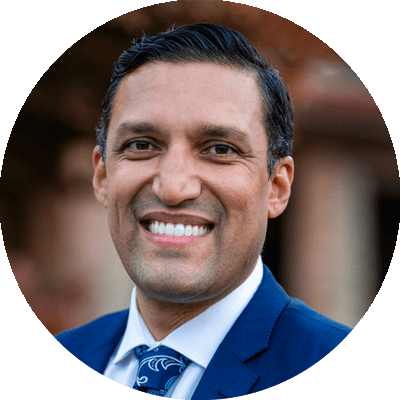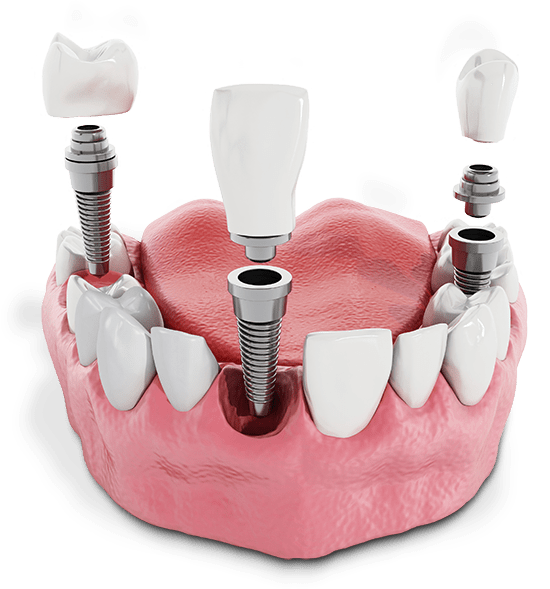


Even though permanent teeth are meant to last a lifetime, health-related issues and unforeseen circumstances such as injury can stand in the way. If you’ve suffered trauma to a tooth or have a painful toothache due to untreated infection or gum disease, a tooth extraction may be necessary to preserve your smile. A damaged or abscessed tooth can quickly lead to more serious issues that could impact your oral – and even your systemic – health! At The Glen Dental, it’s always our goal to save your natural teeth, but this may not be possible if a tooth fails to respond to conservative treatment. Our dentists offer gentle tooth extractions that resolve pain quickly and prevent unnecessary repercussions to your smile aesthetics and function. Sedation dentistry coupled with a beautiful, soothing setting will put you on the path to restored health when you undergo tooth extraction in San Jose & Campbell, CA.
We can help put an end to your painful and discouraging symptoms with full mouth solutions that fit your lifestyle, smile goals, and budget!


Cavities (severe tooth decay) and advanced periodontal disease are the two most common reasons for tooth extraction. A 2020 study analyzing tooth extraction in patients aged 23 to 91 concluded that 52.2% of tooth extractions were caused by cavities, while 35.7% were associated with periodontal disease. When tooth decay is severe, this affects the pulp at the center of the tooth, making it vulnerable to bacterial infection. Root canal therapy usually resolves the infection, but in a small number cases, the tooth doesn’t respond and extraction is required to protect other teeth. Untreated periodontal disease can lead to severe infection that affects both your gums and alveolus (the socket where your tooth sits), thereby causing a tooth to loosen. In some cases, the tooth must be extracted. Other reasons for tooth extraction include:
When you visit our practice, Dr. Bhullar, Dr. Henne, and Dr. Kriegstein perform a comprehensive exam of your entire mouth to determine if tooth extraction is needed. We will take digital X-rays and we may also use a CBCT and or iTero® scanner to assess the health of your teeth, soft tissues, nerve pathways and underlying bone. Dr. Bhullar performs tooth extraction in San Jose & Campbell, CA only when he determines a natural tooth can’t be saved with conservative measures. For most patients, tooth extraction is an efficient and quick procedure. With administration of local anesthetic and or sedation, you’ll only feel slight pressure during the procedure. Mild discomfort after the anesthetic wears off is typically remedied with over-the-counter pain relievers.
Our dentists have vast experience performing routine and complex tooth extraction in San Jose & Campbell, CA. The first step in tooth extraction is numbing the gums around your tooth with a local anesthetic to ensure your comfort. Patients with dental anxiety can also opt for IV sedation. Next, our dentists forceps to grasp your tooth and gently remove it, being careful not to harm adjacent teeth, underlying bone, and gum tissue. Before you leave, we’ll review postoperative instructions and recommendations to help ensure a healthy and comfortable recovery. It usually takes just a few days to heal after a simple tooth extraction, during which time you can take over-the-counter medication to alleviate any discomfort.
Sometimes, a problematic tooth may have broken below the gumline or may not have fully erupted (emerged from the gums). In such cases, surgical extraction is necessary. When more complex tooth extraction and oral surgery becomes necessary, Dr. Bhullar will guide you calmly through the process, combining clinical excellence and sedation dentistry with his caring, compassionate chairside manner.
For the majority of people, third molars (wisdom teeth) are a cumbersome and often painful coming-of-age occurrence. An estimated 75 – 80% of people can’t successfully maintain their wisdom teeth due to inadequate space and related problems. Third molars can interfere with your bite, lead to erosion of other teeth, and make it difficult to brush and floss, which can cause decay. Less commonly, impacted wisdom teeth can cause cysts, nerve damage, periodontal disease and TMJ disorders.
Before wisdom teeth are removed, you’ll be given a local anesthetic to numb the tooth and surrounding area (and IV sedation, if you need it). If the tooth hasn’t adequately erupted, Dr. Bhullar will make a small incision in your gums, and he may remove small piece of bone covering the tooth. For impacted teeth, Dr. Bhullar may break the tooth into smaller parts for more efficient removal through the opening. After removal, dissolving stitches are used and we’ll ask you to leave gauze on the extraction site to help the blood clot form. In some cases, we’ll also prescribe an antibiotic to prevent infection (or treat an existing infection).


After getting a tooth extracted, it’s important to follow our postsurgical guidelines to ensure proper and timely healing. A blood clot typically forms over an empty tooth socket during healing. If this doesn’t happen or the blood clot falls out, the bone and nerves below the socket become exposed. This results in a painful condition called “dry socket,” which is the most common complication following tooth extraction. While dry socket only occurs in an estimated 3% of routine extractions, the incidence can exceed 30% for impacted wisdom teeth. Treatment for dry socket involves irrigating the area with sterile saline and/or a commonly used oral antibacterial rinse called chlorhexidine, then covering the socket with a sterile medicated dressing. This process may need to be repeated a few times until your pain subsides and a new clot forms.

Tooth extraction isn’t the last stage of treatment. Dentures or bridges are an option for multiple missing teeth, but we recommend dental implants due to their unsurpassed versatility, permanence, strength and appearance. Dental implants can be used to replace a single extracted tooth, replace multiple teeth in one segment, retain a bridge or stabilize dentures. The only permanent tooth replacement, dental implants look and function just like natural teeth due to their similar structure, including a post (tooth root) and a restoration (tooth crown). After you receive a dental implant and it fuses with your bone, you’ll likely forget you ever had a tooth extracted!

Studies have shown survival rates exceed 98% in immediately placed dental implants.
Immediate placement of a dental implant at the time of extraction enables reduced treatment time and ensures that you won’t have to live another day with the consequences of missing teeth! Dr. Bhullar, Dr. Henne, and Dr. Kriegstein can also perform bone augmentation procedures right after extraction to prevent any potential issues. Studies have shown survival rates exceed 98% in immediately placed dental implants. Of course, Dr. Bhullar, Dr. Henne, and Dr. Kriegstein have extensive skills and expertise placing dental implants and the knowledge to determine if immediate placement with Teeth in a Day® or Teeth Tomorrow® is an appropriate protocol based on your unique case.


I understand the information disclosed in this form may be subject to re-disclosure and may no longer be protected by HIPAA privacy regulations and the HITECH Act.
